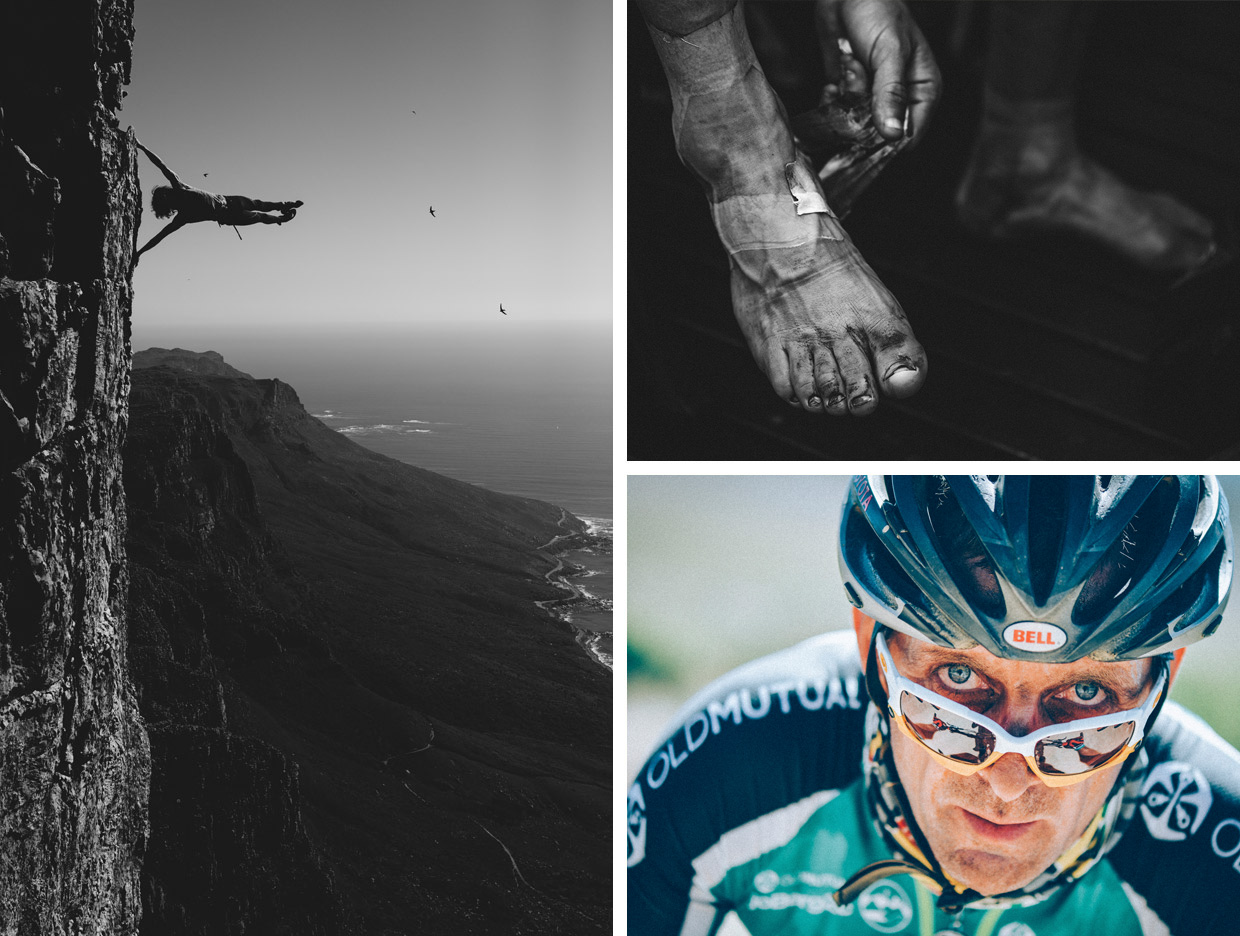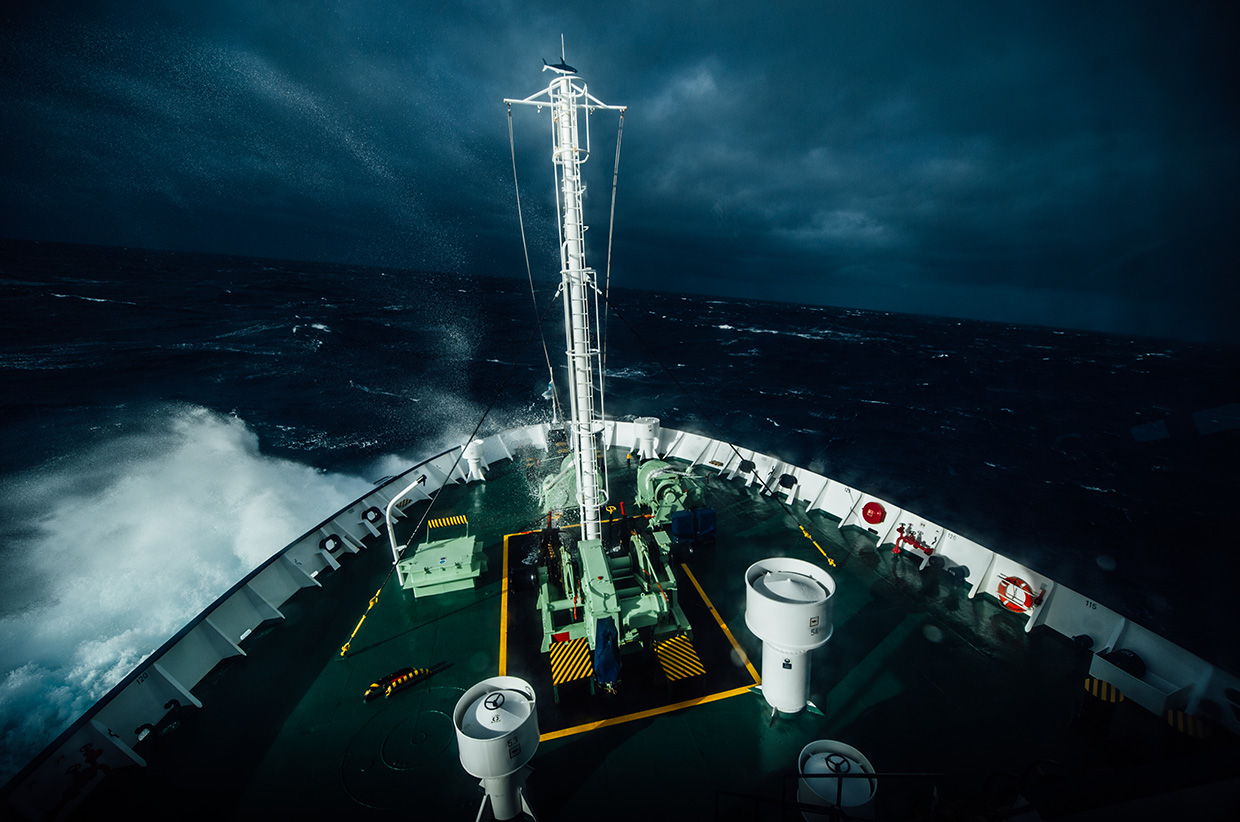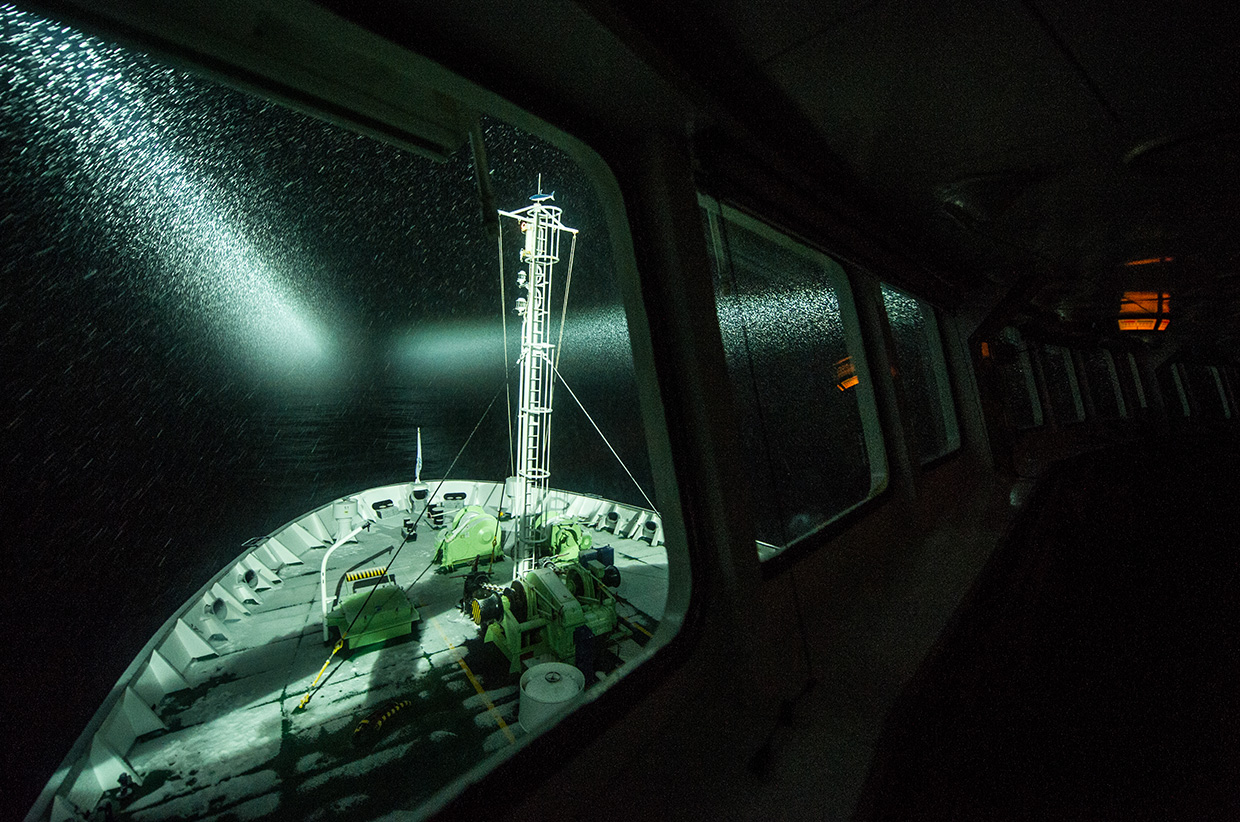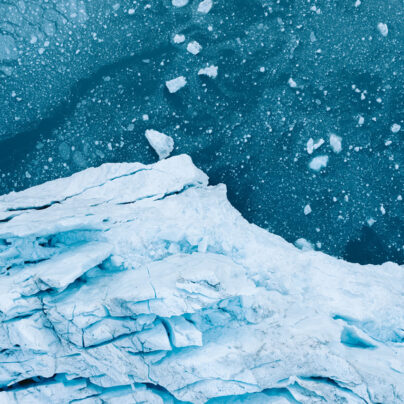A Force Of Habit
Words by Greg Fell // Photography by Kelvin Trautman
Ryan Sandes: ‘I came out of that first foray pretty scared, having realised how far removed we would be from rescue – completely at the mercy of the elements.’
Kelvin Trautman: ‘Pretty scared? I’m sure you told me that was the most scared you had ever been.’
In 2013, I formed part of the Producing team for The African Attachment, tasked with documenting Ryan Sandes and Ryno Griesel’s 220km+ Drakensberg Grand Traverse for Red Bull Media House. We had brought Kelvin Trautman on to shoot stills and video for the duo’s first recce. It was the first time I had ever worked with Kelvin, and the assignment would see him having to shoot both media by himself, lugging camera gear and slimmed-down safety supplies across some of the highest peaks south of Kilimanjaro, all the while having to keep up with two of the fittest guys in South Africa. Their goal was to complete the entire route. At the time, the brief we gave him seemed fair.
A couple of months ago, when Kelvin and I first started talking about this article, he relayed how much more was at stake that night and that maybe ‘pretty scared’ was a bit of an understatement.
At about 20.00 on the second day, under a sky full of stars, we set out to climb the last 300m to the summit of Giant’s Castle, a precipitous peak that sits at around 3,400m. The going was slow and I was tired. Humping camera equipment for what was now 30 straight hours across 160km of rough mountain terrain had taken its toll.
With less than 100 vertical metres to go to the summit, one of the Drakensberg’s infamous unannounced thunderstorms hit us. It shuddered violently around us, but as each flash of lightning illuminated the summit just ahead, we decided to push on.
An hour passed and with it came the hail and even stronger storm winds that almost laid us flat. My world had been reduced to a head-torch beam and my thoughts kept wandering someplace warm. Occasionally a little voice (probably Greg, my producer) in my head would say “push record Kelvin, you need this footage”, but the camera was sodden, and refused to power up.
I had to try hard to remind myself why I was here.
The last rock scramble almost proved the end. We were hell-bent on tagging this peak but – within metres of us – a white flash, an almighty crack, a strike so close I felt it in my spine. We lay sprawled on the ground and there was a literal buzzing of electricity in the air around us. Everyone was OK. We summited and got off that mountain.
The descent took longer than we thought though and after two hours the weather hadn’t let up. It was after midnight now and temps were well below zero. We decided to take shelter. I felt lethargic, and wasn’t sure if it was fatigue or hypothermia. Ryan was shaking uncontrollably. We set about pitching our two-man tent and that’s when I discovered Ryan had decided not to pack the tent pegs. Above the howling wind, he said, “They weighed too much and I left them behind.” I can’t remember if I cursed or laughed. Either way we had to find some way to anchor the flysheet and stop the rain from flooding the tent. While Ryan clung to our madly flapping shelter I went in search of rocks. And I’ll be damned if I could find any rocks lying around. I ended up digging a couple up with my bare hands and using them as anchors.
As I lay in the tent, huddled next to Ryan without a sleeping bag or dry clothes, I reflected, for the second time that night, on how I had got here.
The last rock scramble almost proved the end. We were hell-bent on tagging this peak but – within metres of us – a white flash, an almighty crack, a strike so close I felt it in my spine. We lay sprawled on the ground and there was a literal buzzing of electricity in the air around us.



It’s one of our continent’s greatest gifts, one that forces you to stay in the present and take nothing for granted. In reflection it’s also something that sparked a drive to explore those things that are unknown to me.
For a lot of people the life of an adventure creative is the dream. We see their sunrise posts on Instagram, with gnarly beards and gas-burning coffee pots at high altitudes, overlooking glacier-carved valleys, and we align our attachment to them through this temporal moment and don’t often think beyond that.
Behind that 1″ frame is a why, and the answer to that question solidifies our attachment to their work. It helps us understand what drives a guy like Kelvin Trautman to continue chasing thunderstorms and dig up rocks at 2.00am. It’s the reflection in that tent.
Right now Kelvin lives in London, but this ‘home’ forms part of the greater, much written-about (and often sugar-coated) semi-nomadic existence which sees duffels and passports just about always packed. He is an award-winning photographer and is well on the road to establishing himself as a filmmaker. He has worked on world-class assignments for the better part of a decade across all of the seven continents.
He was born in Zimbabwe in southern Africa, and as anyone growing up in this part of the world will tell you, a risk-averse attitude is ingrained early on. Tomorrow rolls around quickly leaving today’s problems behind and there isn’t much we find insurmountable. Rules are malleable, and if you’re prepared to fight for it, anything is possible.
It’s one of our continent’s greatest gifts, one that forces you to stay in the present and take nothing for granted. In reflection it’s also something that sparked a drive to explore those things that are unknown to me. From an early age I was never too comfortable being in one place for too long.




Two weeks after leaving university, Kelvin boarded a yacht as a novice sailor, and headed west from Cape Town to the Port of Spain in Trinidad. He returned four and a half years later having graduated to racing a myriad of yachts across transatlantic routes, sailing with some of the world’s best yachtsmen, pushing sailboats to their limits, and trying to find his own.
Sailing came at a time in my life when I was looking for answers to big questions. Who am I, and what am I good at? As it turned out, the ocean, a place far from any human distraction and where nothing was very familiar to me, was one of the best places to find those answers.
I did a lot of thinking but I took photos too, and without really knowing it then, photography became my voice. The long weeks at sea, rough oceans, frigid waters, capsizing boats, white-knuckle grips, winning and losing of offshore yacht racing was my vehicle.
This was to be my first taste of reportage photography. With my cameras often housed in a mismatch of Ziploc bags and duct tape I increasingly revelled at the challenge of capturing a story or brief with very limited time available, and in less than forgiving environments – mostly the latter.
I didn’t really mind if my fingers were cold, or my clothes were wet. I didn’t mind if I had skipped breakfast, lunch and dinner. Or I hadn’t slept. For a long time, and to an extent still today, what mattered was getting to document those places and experiences that others couldn’t get to – or couldn’t be bothered getting to. In this sense photography and filmmaking gave me another means to push my boundaries. On shoot self-preservation seems to go out the window very quickly.
Navigating through his twenties, Kelvin was on the edge with his subjects, experiencing the quintessential run-and-gun approach to photography and starting to thrive at it. By combining this with his competitive streak he started to shape a motive for his photography.
With an adventure and competitive sport background I’ve seen and experienced how rewarding a little suffering can be. I’ve come to recognise that being in the proverbial deep end, and to a large extent suffering physically, is probably the most direct path to self-discovery. When you take away all the creature comforts and distractions in your life you quickly realise what is important to you, and how insignificant you are in this world.
This insignificance taught me that documenting extreme sport, like offshore sailing, could be much more than a selfish quest to learn about myself. It could be a way to tell a broader story about humanity.
I didn’t really mind if my fingers were cold, or my clothes were wet. I didn’t mind if I had skipped breakfast, lunch and dinner. Or I hadn’t slept. For a long time, and to an extent still today, what mattered was getting to document those places and experiences that others couldn’t get to.




I’m continually drawn to narrative-driven projects – telling stories really is the fuel driving my creative engine. In my genre this has meant that I’m often tasked with documenting those assignments where sporting people experience what it means to win, to lose and to suffer in remote far flung places
Enter Lewis Pugh, an ocean activist who swims in the harshest conditions on Earth to raise awareness for how fragile the oceans of our world are. Travelling and working frequently with Kelvin over the past few years, their relationship is built on mutual respect and a willingness to forgo the easy, no matter the cost.
‘Having a photographer on my expeditions is absolutely essential’, say Lewis. ‘I am telling a story about the enormous changes happening to our oceans. Words alone cannot do that, but I can’t just bring any person along to capture this. There are two things that set Kelvin apart from anyone else I have ever worked with. First, the level of excellence. He will not stop till he gets the perfect shot. And second, he is the only person who is willing to get into the freezing waters off Antarctica with me! And so he always gets the unique shots.’
Cue empathy – is there any better way to establish it than at minus 1.7˚C? Empathy is Kelvin’s cornerstone, it is where the true connection exists between subject and documentarian, it’s where he finds his greatest sense of fulfilment in his work and he’s prepared to go as far as necessary to find it. It’s the base on which the next chapter of his career will be written.
A big perk of the job is getting to interact with people. I realised early on that one of the lynchpins to making great photographs or films is the ability to connect with your subject. In this way the art of photo and filmmaking transcends mere camera skills. It tests your ability to listen, to be patient, to not take it all (including yourself) too seriously. This helps to break down barriers, and to be human.
For this reason (and many more), I’m continually drawn to narrative-driven projects – telling stories really is the fuel driving my creative engine. In my genre this has meant that I’m often tasked with documenting those assignments where sporting people experience what it means to win, to lose and to suffer in remote far-flung places… but I can’t expect that to last forever. As my outlook on life evolves so to does my choice of subject.
Over the past few years I have found myself being lured into using sport and expeditions as a lens to look at environmental and social condition. For me, a lot of the beauty of photography and filmmaking is in its power to educate and inspire others. I know it’s a noble cliché, but the longer I spend taking photos and making films the more I feel compelled and almost obligated to use this medium to share stories that others could benefit from hearing.
How do I do this? Well, I don’t know. I don’t know how to tell a scientific or cultural story, but I want to try. I want to keep pushing my boundaries – in this case, as a storyteller.



Earlier this year Kelvin hitched a ride around some Icelandic fjords on a yacht with a skipper called Siggi and ultra-marathon runner Rob Krar. For me, Rob’s sentiment on Kelvin’s work defines exactly how I feel when I look at one of his photos or watch one of his films.
‘Kelvin has an eye and vision in his approach to photography that seamlessly lends itself to storytelling.’ Rob continues ‘His photos immediately draw people in and they feel their own sense of adventure viewing vicariously through Kelvin’s lens.’
Very few of us will get to see so much of what this world has to offer, or are even prepared to explore some of our own limits. That’s why storytellers like Kelvin are such vital feeders of our appreciation of the edge of world. They’re the blood we need to keep our hearts pumping and brains dreaming. We need them to be sincere and empathetic of what they’re faced with. In turn, they owe it to us to be true and do whatever they must to find that honesty for us.
Travelling without a destination or itinerary, letting my circumstances guide me, throwing myself into potentially challenging situations – these are decisions I have made over the past decade and they’ve been the grounds for my own organic growth . A place with less expectation, less pressure, and more potential for simply seeing the world for what it is and what we do within it.
I know this may sound like a whimsical approach but if I’m going to be telling a broader story then I have to be wary of how my experiences and prejudices affect the way I take photographs. Like the critically acclaimed humanitarian photographer Sebastião Salgado once said, ‘I don’t believe a person has a style. What people have is a way of photographing what is inside them. What is there comes out.’
Kelvin breathes honesty and true perspective into his work – no matter what it takes to find it. He was born for this life, but it’s the living of his life that defines him, not the medium or subject – and that’s the key, the why, the reason.

Kelvin is a self-taught photographer and filmmaker based in Cape Town and London. His work focuses on narrative-driven content, where he typically uses travel, sport, and pioneering expeditions as a lens to look at human and environment condition.
Website: kelvintrautman.com
Facebook: /kelvintrautman
Instagram: @kelvintrautman
Twitter: @kelvintrautman
Vimeo: /kelvintrautman
Written by Greg Fell
Instagram: @GregMFell
Twitter: @GregMFell
Read Kelvin and Greg’s story, ‘The Fogcatcher’, in Sidetracked Volume Eight




